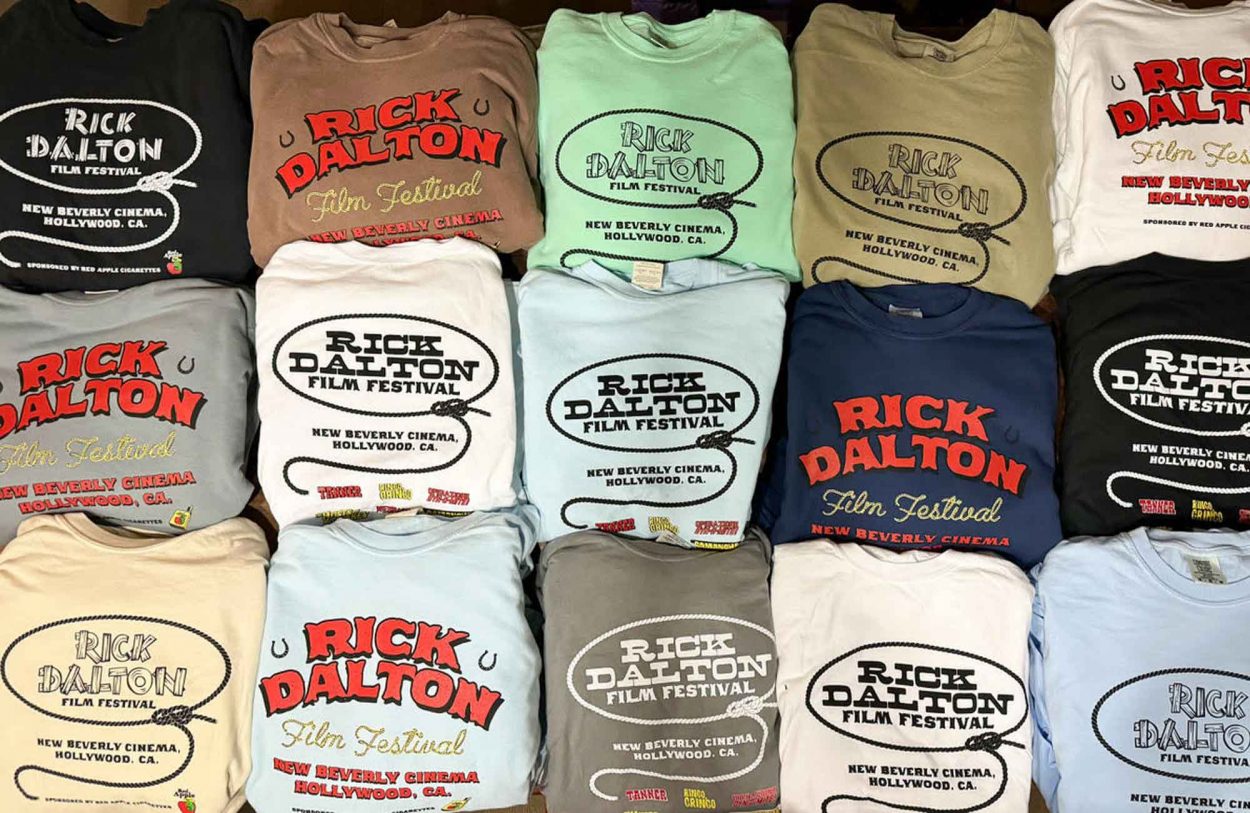For the occasion of the New Beverly’s showing of the unforgettable Nicolas Cage-starring The Wicker Man, Kim Morgan spoke with the film’s director, playwright and filmmaker Neil LaBute.
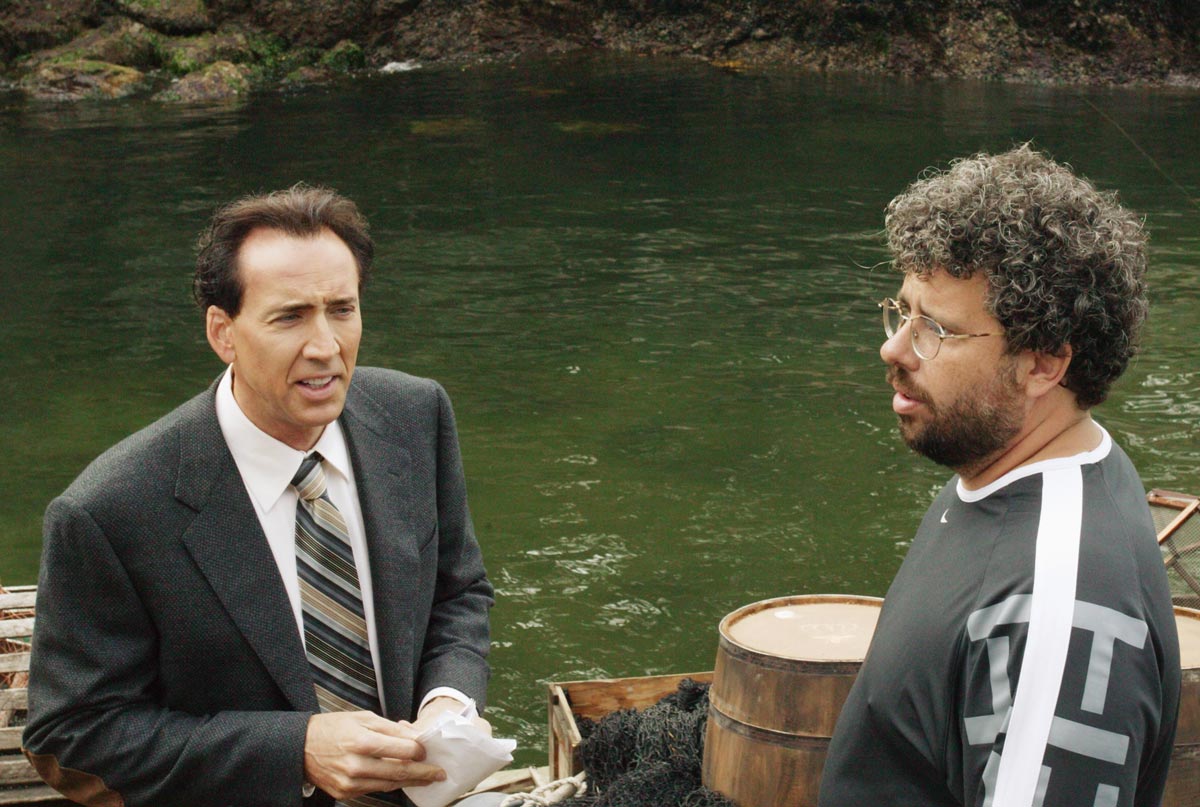 Nicolas Cage and director Neil LaBute on The Wicker Man
Nicolas Cage and director Neil LaBute on The Wicker Man
Kim Morgan: Your current show, Van Helsing, it’s a different kind of woman than a woman from The Wicker Man. Your lead character is a woman and she is the savior who is bringing people back to life with her own blood, right? So the woman is the powerful, potent, restorative force for everyone.
Neil LaBute: [Laughs] Yeah, maybe finally this will be called a feminist work. Everything seems to be judged by that first movie [In the Company of Men]: “Well, it’s not as misogynistic as that.”
KM: Why are people always saying that about you? I don’t think you are. I don’t see it in you and I don’t see it in your work. I see you as dissecting human beings. And human beings are complex, cruel people.
NL: And both sides. And I’ve said to people, and I stand by the notion, go ahead and stack the men and women next to each other from story to story and, and look at them and what happens to them, and I don’t think you’re going to walk away going, “Oh yeah, he is a fucking misogynist.” I think the men, per pound, are far more scrutinized and with far more withering portrayals of their negative qualities.
KM: So, with that, and again, before I get to The Wicker Man specifically, your plays and movies (and this is an easy way to put something more multi-faceted) often deal with the complexity of relationships. Not just between women and men but between men and men and women and women. The tests in relationships, the games that people play; that relationships are a relinquishing of control or an assertion of power. Your work challenges the viewer and as you’re explicating all of the details you’re often opening up wounds. What lures you toward that?
NL: Well, I suppose it’s fascinating to me. I want to examine it, and as a writer, I feel compelled to share some of those thoughts. With that, [the work] will gain questions more than anything. And, often, it’s not me with a great answer going, ‘Look what I discovered!” It’s me going, “What the hell? I don’t know. You tell me why this shit is so hard.” I’m going to exemplify that in a relationship and say, here’s this transaction going on between these two people, or as you say, this power struggle or whatever it is. I mean, people have been doing that for a long time, and people have spent careers doing it, people I really like: people like Rohmer, as diverse and as delicate as he is, and someone as swashbuckling about it as Strindberg. That’s a nice word for Strindberg. [Laughs]
KM: He had a great view of marriage …
NL: Swashbuckling. That suggests a kind of derry-doing quality to it. [Laughs] I don’t think he was as nice about it. He was able to still x-ray himself and others and ask, “What is it? Why is this shit so hard?” But it doesn’t necessarily give me a dim view [of relationships] either. I still believe. I don’t want to turn out to be like Zsa Zsa and go, “I believe in it so much, I did it nine times, darling.” [Laughs] But it doesn’t stop me from believing that it’s possible and has all the capacity for wonder that it has disaster, on the other side. But wonder just doesn’t cut it as much in what we do. It’s all right, but you have to leaven that with some darkness, you have to have conflict, you have to have those moments that create. Like, if you watch Scenes from a Marriage, there’s some wonderfully fun moments and lightness and then there’s some just withering exchanges that you kind of can’t believe somebody captured.
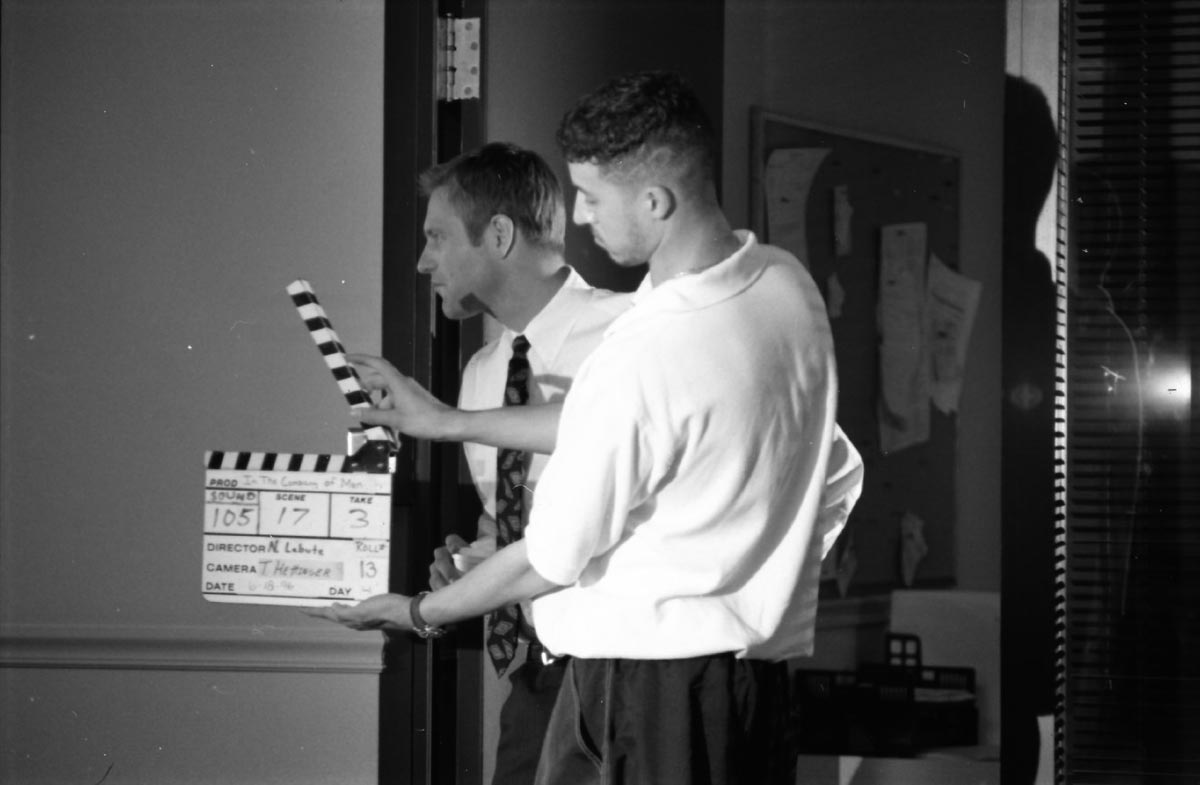 Aaron Eckhart while filming In the Company of Men
Aaron Eckhart while filming In the Company of Men
KM: I could list so many of your plays as well, but I’m starting with your early movies: In the Company of Men, Your Friends and Neighbors and The Shape of Things (also Nurse Betty and Possession) – there’s a lot of sadness and poignancy and humor but also a lot of poisonous behavior on display. There’s also a searing element in what people sometimes see in themselves, certainly what they have seen or felt in others – how do you feel about the dispute many of your works provoked? The controversy? Do you enjoy it? Or …
NL: I certainly don’t shy from it, but it wasn’t a means to an end. It wasn’t just, let’s keep doing that, let’s set the bar into a new place, let’s see just how high that bar will go. But, there’s nothing wrong with taking an audience to a place that they don’t expect or to challenge them or to study people that they might rather not. Or to end a piece with less concern for the audience than for the characters – that this is really where those characters would end up not in some sort of convenient reconciliation two hours later. Or, mechanically, trying to find a way on film or on stage to rattle the audience a bit, to take them out of their comfort zone … but to break that fourth wall, or to take away the curtain call that they’re used to or to make the music really loud or do things that somehow challenge that sense of safety. So it’s got to be either in the drama itself or it has to be in the mechanics of how you do the thing.
KM: I recently re-watched In the Company of Men and The Shape of Things, and I thought, especially In the Company of Men how, as controversial as it was at the time, that it might almost be considered a feminist work today. Many of the themes you studied are talked a lot about NOW, I feel, more than ever. Much more about toxic men – what do you think people misunderstand about what you’re communicating? I don’t think women were as shocked by In the Company of Men then (sometimes, men were more shocked by it) and I don’t think they would be now…
NL: I think you’re right. And that was always a bit of a surprise to me. I thought that, OK, I understand this misogyny label, but as soon as I say: Look, I think you’ve absolutely got the wrong movie. If that’s what you want to slap on me, you better find something else, because this one is certainly not doing that. This character is sort of sociopathic so he’s not even in the normal realm of who you deal with in relationships (although people do run into a sociopath every now and then) but he quite obviously, and purposely on my part, behaved the same shitty way with women, men, white, black – didn’t matter – he had this need to have this game, this cocksmanship with anybody he ran into. So that doesn’t really make it very misogynistic.
KM: No. I don’t think so either. And it also plays like some extreme allegorical version of what you fear…
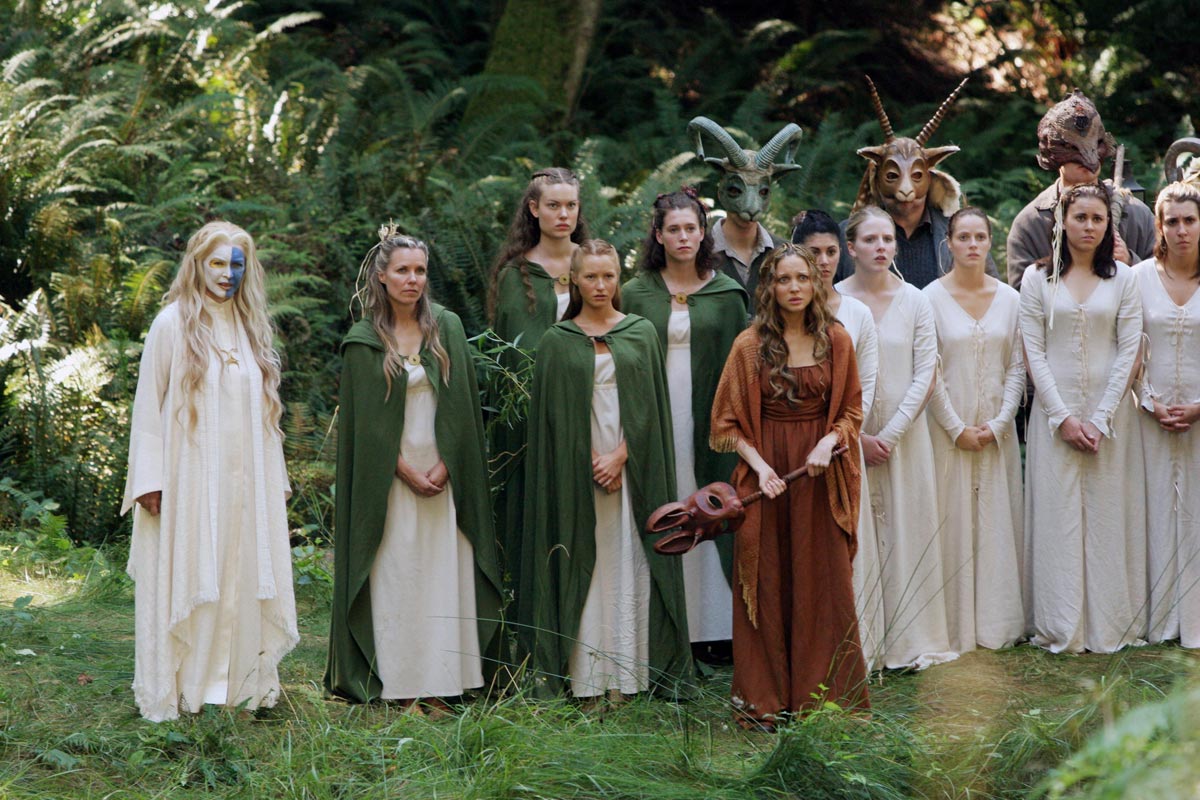 The Wicker Man (2006)
The Wicker Man (2006)
NL: Yes. And there’s a good segue way into The Wicker Man…
KM: Exactly. The Wicker Man is obviously this very extreme vision of a matriarchy and a vision someone like Aaron Eckhart from In the Company of Men or Jason Patric from Your Friends and Neighbors might think all women are like. Like, all the time, whether outwardly or buried down. It’s like man’s ultimate nightmare of female revenge…
NL: Yeah, that would be it. [Laughs] Landing on the shores of this island, and it actually existing. It was probably just the right place having heard – I don’t know how many years at that point, close to ten years – but hearing of [having] this kind of misogynistic or misanthropic view. And when they were looking to change the story – and I think we’ve talked about this before – but it wasn’t me going to anybody else and saying, “Hey, I’d love to remake The Wicker Man.” While I had always thought it was a movie kind of ripe for remake because I always loved it, [but] I didn’t think it was particularly well made. It was a blast to watch but it makes you giggle too, but then the ending. It was completely sobering. It was, “Oh fuck. They’re gonna kill this guy.” And in fact they do. And that’s when you stop laughing. And so the idea was very much the same here. So it was: What’s another version? We can’t exactly do the same religious idea here. I mean, not that you couldn’t, but we opted not to. So … I threw out this notion of this matriarchal society, and this sort of honeycomb of a plot, and they said, “Great.” And they thought, who better to create it. And so off I went. And I think a lot of things happened along the way that chipped away at making it even stronger. When you have too many people with too many different ideas, even [ideas about] the kind of genre you’re working in, that’s tricky. I’ve now learned how difficult it is to make people scared when the sun is shining. It makes me watch The Shining in much more awe. It’s really tough to do that. Night is often used in horror films and thrillers for a particular reason: what you can’t see frightens us. But you know, we were fully aware that this guy is running around in a fucking bear suit [laughs] and you know, the karate chop battles with women. We thought: this is going to make people giggle. They’re going to think this is funny, especially with Cage unleashed, doing his thing. But in the end, we’re gonna kill him. They’re going to actually string him up and burn that son of a bitch. And I hoped that the end result was the same. I don’t know that it ultimately was, but that was certainly the intent anyway.
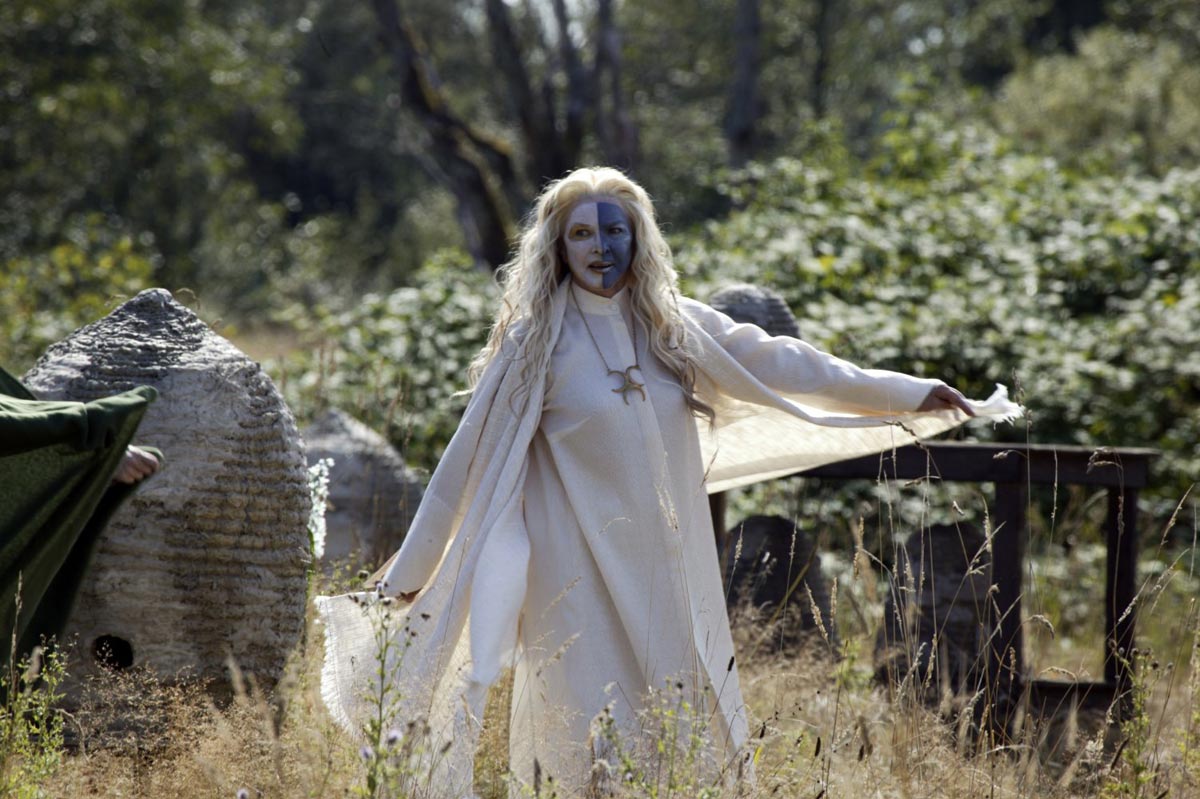 Ellen Burstyn, The Wicker Man
Ellen Burstyn, The Wicker Man
KM: Well, I think, that the picture falls more into the realm of emotional honesty rather than what people perceive as realism, whatever realism means, and it feels like this terrifying male fantasia. So even the parts that are humorous play real to me, because men are so often fearful of looking ridiculous and especially a cop! There’s also a kind of satirically extreme aspect of super politically correct feminism. Were you riffing on that?
NL: Oh, I think so. There was definitely an idea to make, not so much a cautionary tale, but to take this to its illogical conclusion, and have fun with it. Put this guy in this position, the position that the young woman usually finds herself in – running through some town of backwoodsman, and this guy who thinks he’s got the power of the police and the patriarchy and all of these things in his pocket. And then take those things away and put him on a bike [laughs] and he’s running around on the island in his little shirt and tie… We thought that there was a lot of stuff to mine that would be, at least a shift; something you’d never seen before. For me, that’s part of what this is – to not do what somebody else does, especially if you’re doing a remake. I’ve now done a remake of a film where they wanted almost like, a shot for shot remake, not that close but pretty damn close, when we did Death at a Funeral. Talk about feeling like someone for hire…. You know, you’re like a photographer at a wedding. It’s a very different animal to be given a kind of carte blanche to say, “Hey, let’s come up with some crazy stuff here.” And certainly [Nicolas] Cage was egging me on to do the same thing. I think he’s happy to do work that he hasn’t seen before. To do characters that are out there. That’s success to him, whether it’s lauded by people or laughed at by people. It’s hard to say what’s going to happen. It’s such a fine line, that kind of movie. I’m doing it on a daily basis with this vampire show I’m writing, and half the time you look at each other going, “This is the dumbest thing I’ve ever thought of. This is ridiculous.” And then they watch this and love it. And you throw a bucket of blood at it and they’re happy. It’s a really fine line between being really arch and serious and becoming a parody of yourself and you just have to walk that line and hope that you don’t. I mean, there are bits in this movie that people have famously, for ten years, made videos of: of him screeching out lines, or the bees … Does that make it hard to sleep at night? Not really. It’s interesting, some people love it some people hate it and I guess that means it’s something people keep thinking about.
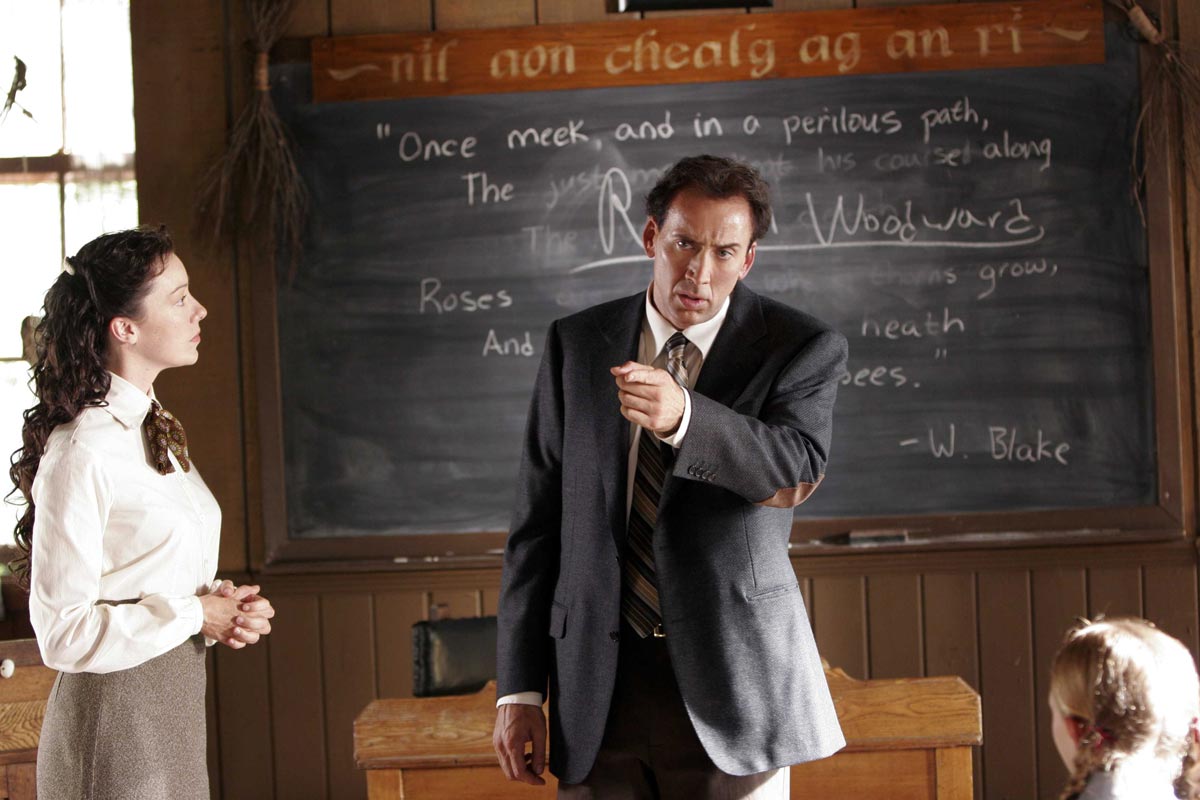 Molly Parker and Nicolas Cage, The Wicker Man
Molly Parker and Nicolas Cage, The Wicker Man
KM: You don’t forget it or him. He’s wonderful in this picture. I feel, and I love this about him, that Nicolas Cage is more of an expressionistic actor.
NL: [Laughs] That’s a perfect word.
KM: He would work wonderfully with F.W. Murnau or Fritz Lang or Pabst…
NL: Oh yeah, at times he’s like Kabuki. But god bless that someone is so in their own skin that they’re willing to do that. He does not worry about playing it safe. He is willing to go beyond a traditional, naturalistic piece of acting. He is willing to be more theatrical, willing to be more operatic, willing to create performances that, however you feel about it, you’re never going to forget that one. And he’s had a handful of those… The Herzog movie … crazy, crazy but great crazy…
KM: Bad Lieutenant: Port of Call. Really great. There’s nobody like him. It’s a shame he never worked with Kubrick because Kubrick loved large actors. It would have been great had Cage worked with him…
NL: Oh yeah. Can you imagine some of the close-ups that would exist of him?
KM: Yes! He’s so part of the universe in your movie, so perfectly. That’s also why I was thinking of Hour of the Wolf – a surrealistic nightmare, a psychological horror movie. I don’t know if you thought of that movie while you were writing this but it is on an island. And I know you love Ingmar Bergman …
NL: No. I only wanted to go to the island after the film was released. [Laughs] “It can’t be that bad there? People crawling the ceiling. Can’t be that bad.” No, I wish I was thinking as highbrow as that. But you are thinking of every thing you’ve ever thought about, or movies you’ve seen … But back to Cage, he really hands himself over to you and says, “I’m not going to shy away from what we’ve got here, from what we’re trying to do.” And he plunges in. You look at the filmography of that guy and it’s from tent-pole studio movies to the craziest independent films you’ve seen. He really has a fearless sense of self.
KM: And what was it like to direct him as opposed to other actors you’ve worked with?
NL: He’s as good as any other actor I’ve worked with in terms of understanding a scene and being able to give you what you want. What he was always great about was giving you an alternative. You know that he’s really studied the thing. He doesn’t just come in and say, “Where do you want me?” And, “OK, that’s great. I’ll go back to my trailer now.” He, probably more than myself even, and sometimes it would come halfway through the day when we were going in one direction, but he’d say “I’ve got an idea…” This is a guy who was constantly thinking, “How can we set the bar even higher? And what weird stuff can we do?” and was willing to do both versions of those so that we had them. He was never somebody who came on and went through the paces … not like, “I plan to buy an island with this.” I mean, he probably did buy an island [laughs] but he also was there to do the work. He was so fascinating to watch work. He instinctively knew when something was funny or when something needed to be more serious or modulated, you know, “I’m gonna give you one way up here, and one way down here.” If I went back to put a compilation together, it would still surprise people with how many other versions of crazy he could play in some of those scenes.
KM: I also like that his character was really damaged before he got to the island. He was traumatized, taking pills, lovesick. You wonder just how much he’s hallucinating, and it makes the whole island this weird dreamscape…
NL: Yes. It allowed us to try some additional things with what was going on in his head – what was real, what was unreal. Rather than it being, straight up, this guy seems steadfast and always says his prayers; he’s on the up-and-up all the time. No, this guy has been through some trauma and so; therefore, with medication and all of that, you could afford yourself some lateral movement in terms of what’s real and what’s not.
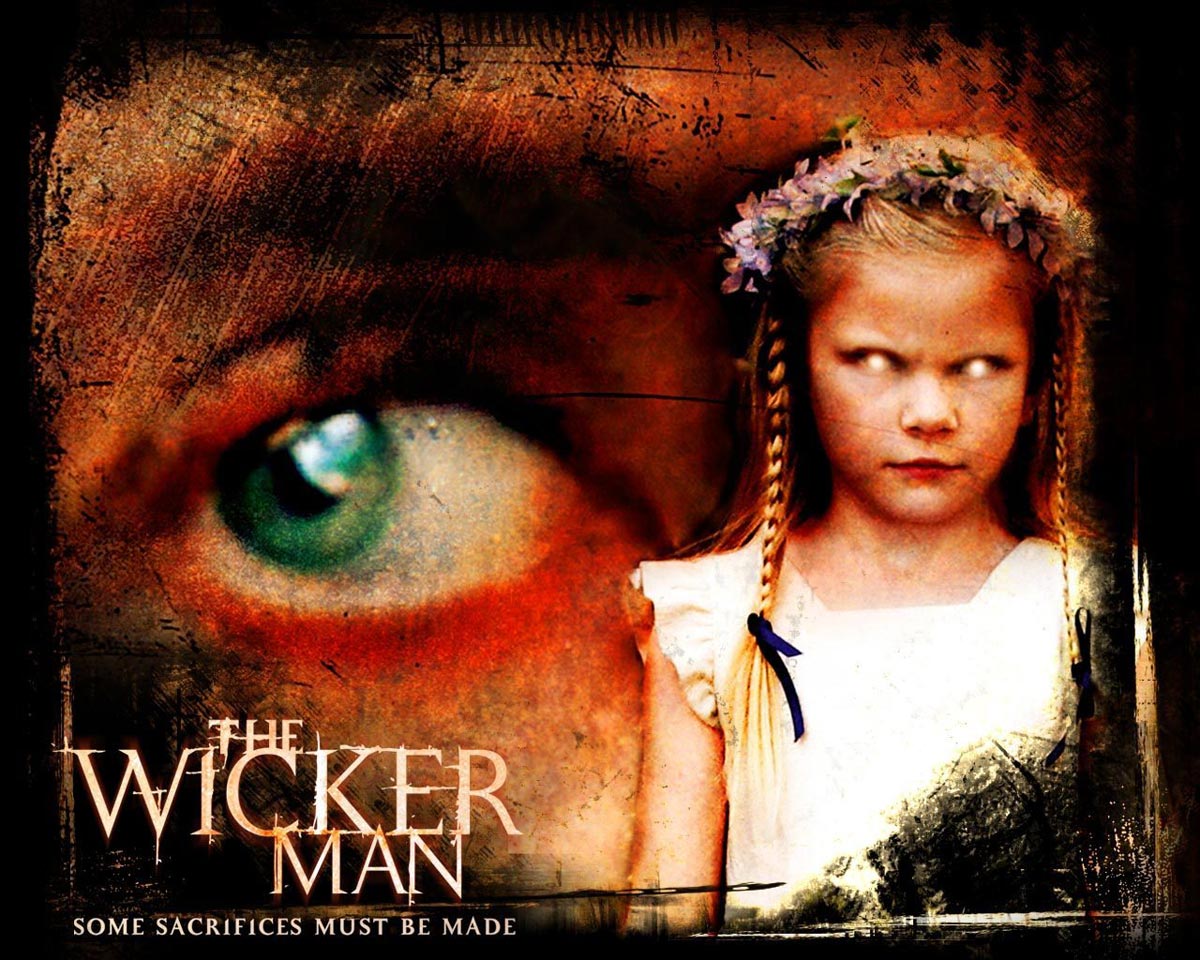
KM: How is directing this movie, something more large scale over more intimate pictures like The Shape of Things – how is the process different for you?
NL: You kind of have to realize the world you’re working in and the people you’re working for. They want that thing they think is interesting in you, but they want it to fit into the box that they’re working in. And so, if they’re doing a thriller with Sam Jackson and they’d like your spin on it, they still, in the end, want a thriller and they want Sam Jackson in it. So, you kind of have to say, “I know what that world is and I can give you that.” It doesn’t have to be Sam Jackson is going to sit at a bar and talk to someone for two hours, he can do all the things and I can accommodate all of that. But with The Wicker Man, I do think there were times where, there were too many of us who were, not at odds but… I never really felt it was a horror movie, I never really felt the original was a horror movie. I felt it was its own sort of hybrid thing and that the scares were kind of secondary to the general sense of dread. But once there was a push, sometimes gentle sometimes harder, to make it scarier, once you’ve gone a certain distance and shot something in a certain way, it’s hard to then just turn around and say, “Well, let’s insert those here,” without them being really facile. You know, a cat jumps out of a closet because it just happens to be in there, or the music gets really loud at one moment when someone’s face appears in a window. Of course someone would jump! Someone just threw something at the screen or the music is really loud – that’s just your nerves coming to life. It’s an involuntary thing, it’s not like it’s well planned or executed. But for me, it was much more of, could we create a sense of creeping suspense and, even with the humor, a real sense of foreboding of what’s gonna happen to this guy? There’s only so many places he can run on this island and he’s going to get his back in a corner at some point. And he very much does.
KM: I assume you decided on the bear suit. I love the bear suit…
NL: I do too. I wrote the bear suit. It was trying to find an equivalency to the wonderful kind of punch outfit that they’ve got the guy running around in in the original. There’s almost no way to top that, it was such a great, great series of costumes in the original movie. But it’s the Northwest with this very rural background: what kind of costumes would they actually have for a festival like this? This made sense – they’ve just gutted a bear and literally put the whole fucking thing on. [Laughs] And it was not an easy costume to make. And Nic would get inside that thing and run around … [Laughs] When he comes running up the hill and that woman’s like “Hey!” and he smacks her and grabs the girl … he played all that shit just as in the moment and true to life as he possibly could. It wasn’t for him to make it tongue in cheek but if people found it funny, they were going to. You can’t stop someone from laughing. But, my hope always was that there’s going to be that moment where the other shoe drops. It’s like with An American Werewolf in London – there’s that dead guy wandering around with you and telling you stuff, and every time you see him, he’s more grotesque. And, yet, it’s going to end actually quite sadly. They put a lot of laughs into that movie but there’s a really sad ending… same thing here. The idea that this guy, who has now found out that this is his child [he’s looking for] not just a child, making that more of an important connection to him. And so, at the end, utilize the best thing in the original – the ending – which makes you stop in your tracks with: “Shit. They killed him.”
KM: Did you have any sympathy for any of the women in the movie?
NL: Yeah. I wasn’t trying to create just a group of harpies. I thought they were all very carefully cast with some amazing actresses, Ellen Burstyn, she was great, Molly Parker was also so great, so watchable, Frances Conroy, Leelee [Sobieski] has just got that face … those closeups that Kubrick got of her in Eyes Wide Shut are unreal, there’s a couple of brilliant ones in that costume shop. All of them really jumped in and had a ball making it.
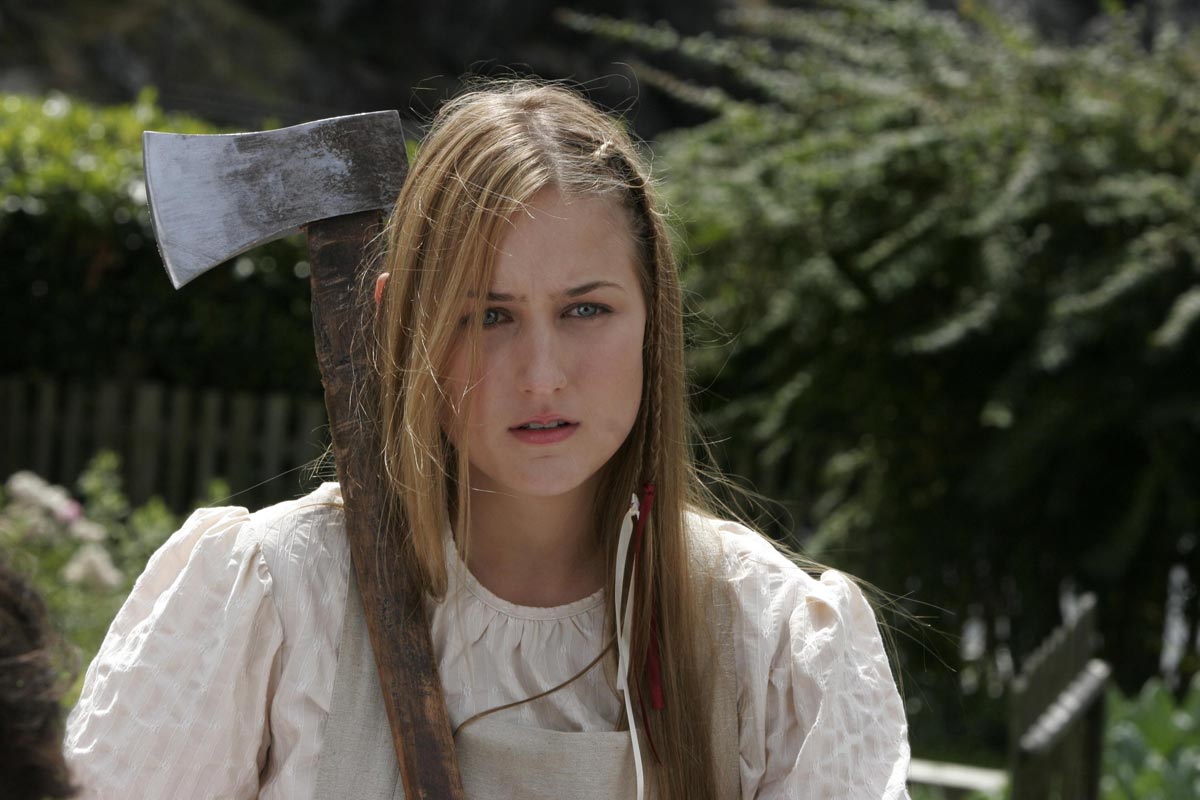 Leelee Sobieski, The Wicker Man
Leelee Sobieski, The Wicker Man
KM: How did you feel about the response of the film? Do you feel like some people didn’t get it? That they didn’t get what you were trying to do?
NL: No I don’t feel that. I just think they didn’t like what they got and that’s just the way it goes. I think it was also the perfect kind of movie to bring me down a little bit. I had done a lot of drama and different things and it was one you could latch on to and say, “Yeah, this is kind of stupid, right?” and, “He can’t make that kind of movie. He can’t make a scary movie.” So it was a perfect time to be brought down and a perfect vessel. It was what it was. You can either let that really rock you or not… So, I can’t look at it as a negative. And you learn definitely as much from that as you do from what many people love. You learn all kinds of stuff in terms of what it does to create suspense on screen or to make a thriller or to make a horror movie. You learn from everything you do if you’re open to the learning of it.
KM: So many things could be a horror movie too, when you think about it. And I don’t really think of The Wicker Man as just horror movie. The Shape of Things is more of a horror movie…
NL: Exactly. And In the Company of Men was more of a horror movie than that.
KM: Your works still resonate now, and as I was saying about In the Company of Men or The Shape of Things, feel timely about many things we’re talking about, more specifically in the culture currently…
NL: They certainly have remained and maybe have manifested in different ways but it’s not like it’s gone away in 20 years. It’s literally 20 years since In the Company of Men, this year, and look around what people are talking about and what’s happening. It’s as prevalent and as on the tongue as anything.
KM: And I feel like many movies that are writ large, like The Wicker Man, have better more interesting reputations in the future. I feel that your movie will hold up well…
NL: That would be a lucky thing if that happened. It would be fascinating to see what another 20 years does and if people approach it in a different way. Time will tell, I suppose.


